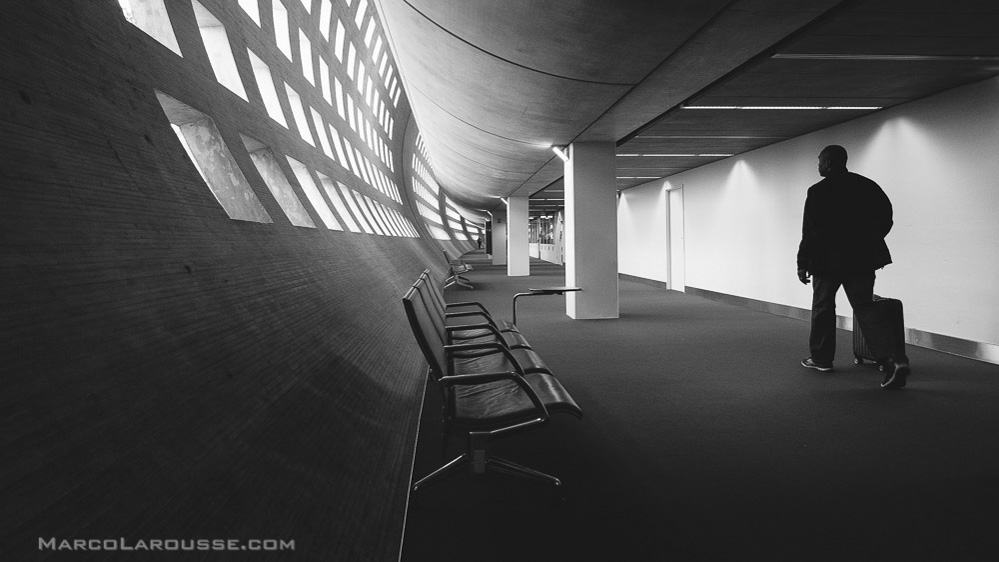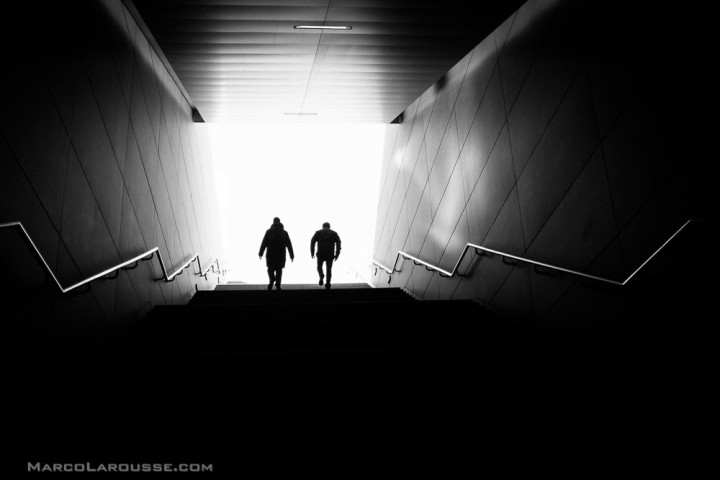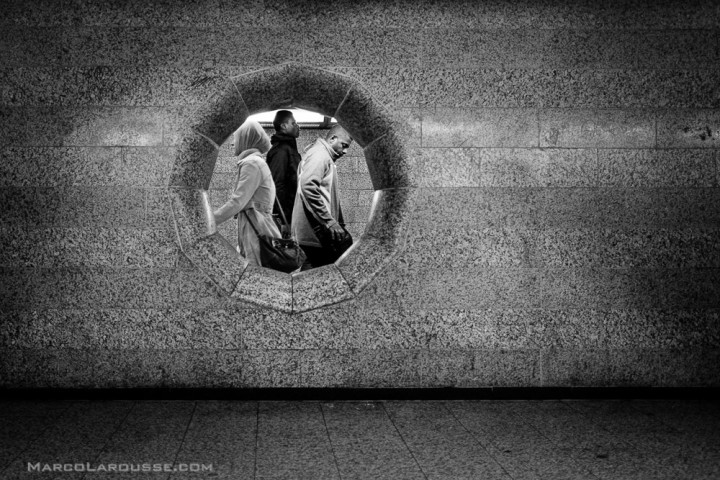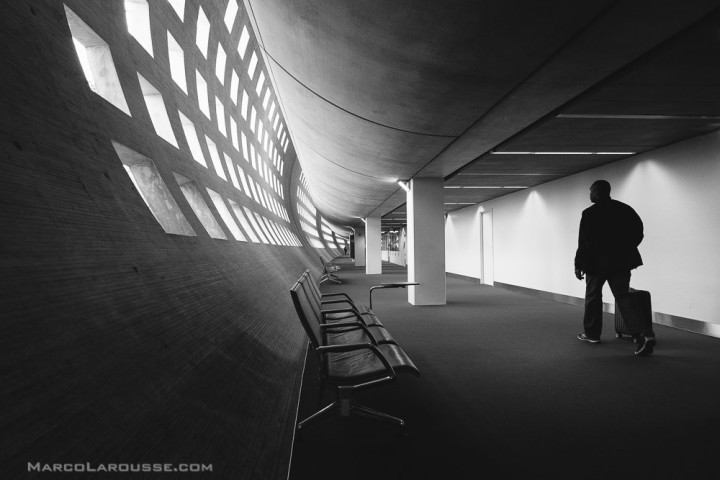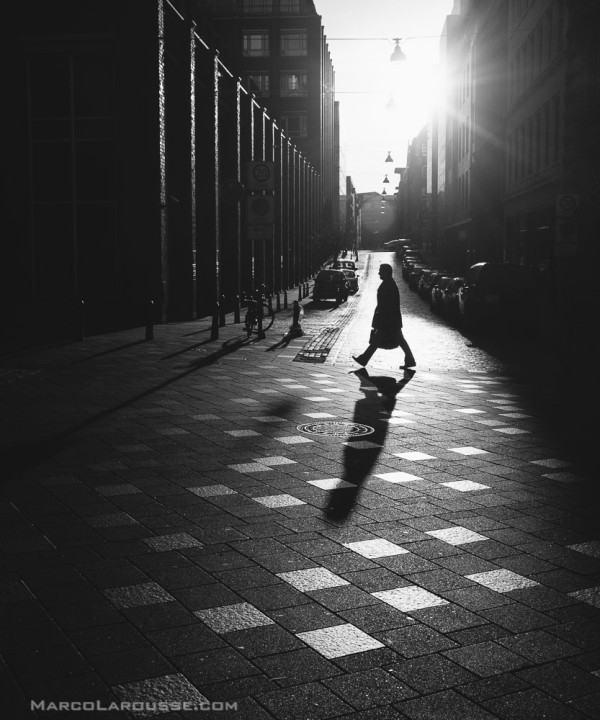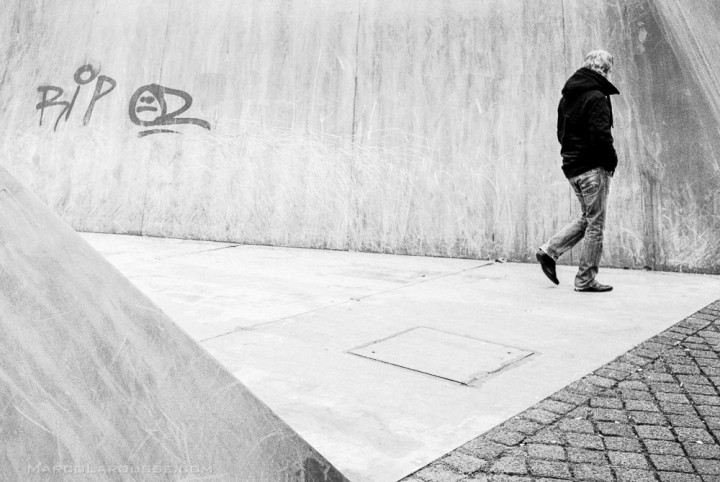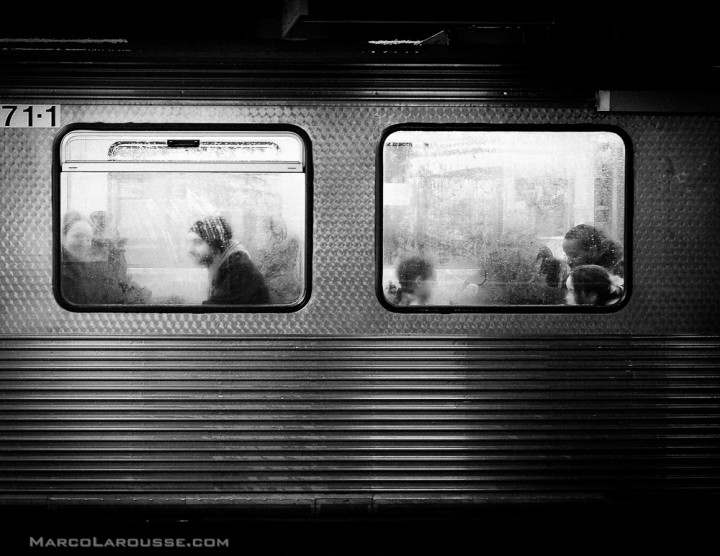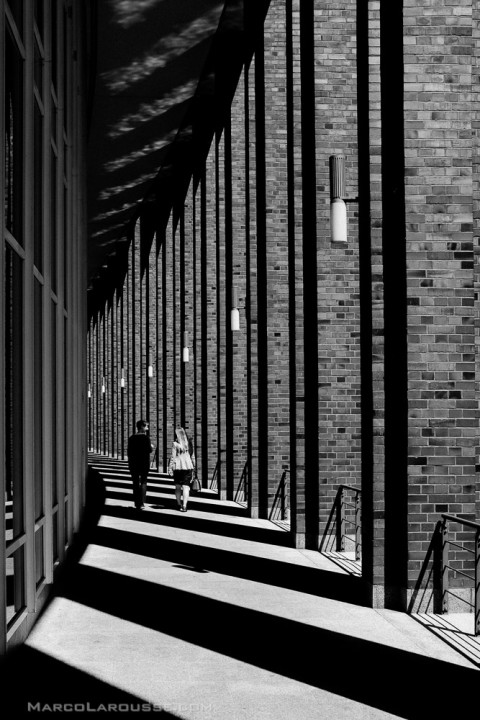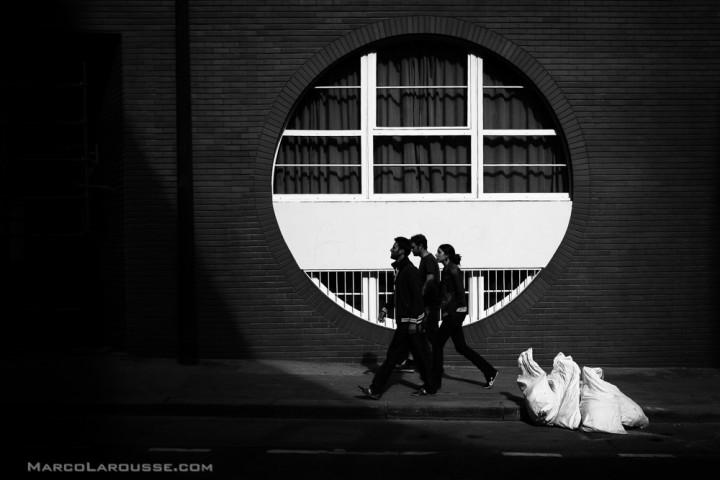Welcome to our series of 100 interviews we will be holding with professional photographers who use mirrorless cameras for work! “Switching to a smaller and lighter system” has become somewhat of a buzz phrase as of late, but many working photographers take this philosophy seriously. From medical reasons such as resolving back and shoulder pain to the simple realisation that bigger does not mean better, photographers are turning to mirrorless systems now more than ever before.
This week’s interview is with Marco Larousse, a street, documentary and fine art photography from Hamburg in Germany who shoots both digital and film. An official Fujifilm X Photographer, he has been using the X100 series since the first model appeared on the market. He also runs a blog called Fuji X-Files where he documents his experiences with X series cameras.
Visit Marco’s photography website and follow him on Twitter.
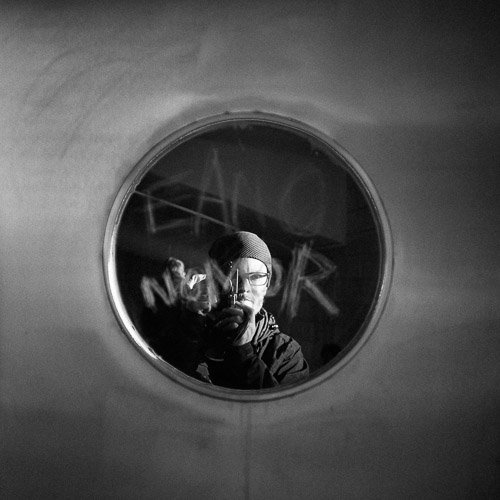
Who is ‘Marco Larousse’ in three simple sentences?
– A loving husband and father.
– A very passionate street, documentary and fine art photographer.
– Thankful for many things in life 🙂
You are a professional street and documentary photographer. Do you remember the first street picture you took or the picture that made you decide that this was the genre you wanted to pursue?
I think that it was a slow process that evolved over time. I remember that I started to consciously go out to take pictures of people in their ordinary everyday daily life in the mid 90s. It was when I started to travel to Asia quite frequently and felt the strong urge to document the real daily life of people instead of focusing on tourist attractions. I found this to be a quite powerful way to learn and understand a culture and document how it differs from my daily life.
Looking through your portfolio, we can see that you give lots of importance to architectural elements that somehow “trap” your subjects. There is one photo in particular (seen below) that in our opinion embodies this approach very well. Do you often go back to the same location, perhaps with the hope of taking a better picture than the last time you visited the place?
Each photographer has some favourite places around his or her city where he/she finds it interesting to take pictures. And that applies to me as well. Some areas are just very inspiring and have enough interesting people walking by. With changing seasons and different light and shadows you can create completely different looking results in the same location by changing angles and exposures around and focusing on different subjects.
But the particular image that you referred to in your question was one of two photos I took there. After I got this result on the second exposure I stopped and walked on. I knew that I would probably never take a better image there again. But there is a chance that I may go back one day to make a series of similar images at that location.
You chose the X100/s, and subsequently the X100T as your main camera. What are the features on this series of cameras that you find particularly useful for street photography?
I think what makes this camera perfect for street photography in general is that it has an absolutely quiet mechanical leaf shutter, is unobtrusive and has a 35mm FOV lens. And of course it has very good image quality while still being small enough to always take with you.
I personally also love the classic operational layout with the aperture ring right at the lens and shutter time and exposure compensation dials right at my thumb. But the overall operability and layout of the X100S works better for me than on the new X100T.
We are now on the third iteration of the X100 series. Is there anything about the series you’d like Fujifilm to improve?
I was one of the very first X100 users in 2011. And the original firmware made this camera a real challenge to work with. But I and many other photographers informed Fuji of what we would like to see changed. Fuji reacted to many of these requests by improving the firmware via free updates. With the introduction of the X100S Fuji also implemented many hardware changes that we had asked for.
Expectations for the X100T were high, but personally I think that some major changes were left out. The one major hardware feature I think is worth mentioning and a big improvement over the X100S is the addition of WiFi file transfer.
The three biggest hardware features that I was expecting (and would still like to see on the next iteration of the X100) are:
– A distance scale for real and quick manual (zone) focusing on the lens (like XF 14mm or 23mm lens)
– Weather sealing
– A flip LCD screen for waist level focusing
The flip LCD screen can be very helpful in street photography since you can look down while framing your subject. It is less obvious than looking and pointing the camera straight at your subject.
And I would like to see the next X100 camera focus more on essentials that are really important to operating this wonderful street and reportage camera in a more simple way. Too many options are distracting and can disconnect you from the scene. A day out with a Leica M2 can feel really pure and refreshing.
You are also an avid film photographer. When would you choose to use your digital Fujifilm cameras over your Leica M2 and M6, and vice versa?
I grew up shooting film and have used analog cameras much longer than digital ones. Therefore I can really appreciate what digital cameras have done for modern photography. Taking pictures in low-light and high ISO without having to use flash and still get really good quality is a blessing. I can also take a photo and share it with the world within seconds. That is very powerful for current events and reportage style work. But it has also changed how people photograph. In general we take too many images and often feel overwhelmed by having to organizing, post-process and decide on which ones to choose for publishing.
I take the analog Leica when I want to challenge myself to stick with the essentials for the day. A fixed focal length with manual focus, aperture and shutter time. The bare minimum with no distractions. I choose my scenes more carefully and try to make every shot count. There are days when I only take 2-3 photos. But that is ok. And when I develop and scan the film I feel like I’m really creating something from nothing. A good analog photo feels to me like a bigger accomplishment than a digital one. I am also more emotionally attached to a good analog photo because I know how much more time and skill is needed to get it right. But to the viewer it may not matter as it is often the results that count.
So to answer your question. Digital for low-light, when I need quick results or when I need to shoot an event and cover many areas with many exposures. Analog when I feel like I need a break from digital, for that pure photo experience and when I want to physically feel the magic of creating the image and be in charge of the whole process.
You primarily shoot in black and white. Was this a conscious choice or did it happen naturally? Are there any triggers that make you want to shoot in colour?
I think it’s natural for me to shoot in black and white. The first photo that I ever took with my first very own (plastic) camera was a black & white photo. And it was probably at that time that my brain connected taking a photo with the result turning out in black & white.
I did shoot in colour many years later but always came back to black and white. We are trying to document a 3 dimensional world with a 2 dimensional medium. Depth of field, framing and light and shadow can help us to give the image the extra depth to tell the story that we want to tell. And I feel that colour often distracts from seeing the soul of a scene.
Therefore my basic mode is black and white and I have to consciously decide to shoot color if I think that colour adds important information to the image that would have gotten lost in greyscale.
The name by which many people know you is HamburgCam on Twitter. What does the city of Hamburg mean to you and how has living there influenced your work?
I was born and raised in Hamburg but lived abroad for a few years. Hamburg is Germany’s second largest city. I have been to cities that are much larger and towns that are much smaller. But I find Hamburg to be big enough to offer almost everything that one can ask for while still being small enough to know what is going on.
The city is quite diverse. It has rich mansion areas but also has alternative lifestyle parts of town where artists live and work. To me this is an important mix and visually stimulating. It is also good for an artist if there are people in your city who can afford to pay for art!
But the uncertain legal situation about publishing documentary and artistic photography of people in public spaces (without their explicit consent) makes street photography difficult in Germany. To be on the safe side you should not show the person’s face if you don’t have permission. And this is a big limitation for documenting contemporary life. Therefore much of my work is more fine art rather than documentary street photography at the moment.
On an ordinary day, how many shots do you usually bring home with you? Out of those shots, how many would you potentially share online or include in a portfolio?
Unposed street photography is like going fishing. You go to a place where you think that you can catch something. But you may return home with empty hands. There are days I don’t take single image because there was nothing that struck me. And then there are days I may take 100 images when I’m on a roll.
My keeper rate with analog photos is higher as I’m more selective and may only get one shot for a scene (it’s slow to manually wind). On my digital camera I only work in single shot mode but may still take 2-3 shots for the same scene.
I share quite a few images in my Twitter stream online but I’m more selective for my portfolio as it should not be too big. So from a technical point of view, I think that I could share 50% of my images as they are keepers. But I’m much more selective and maybe only share one or two images from a location. I find that serial images from the same subject and location, that are not in a documentary context, can easily bore the viewer. I would like my viewers to spend a bit more time to look at each of my photos rather than quickly flicking through them.
Social sharing sites such as Flickr and 500px, as well as forums and Facebook groups are saturated with street work. Why do you think that so many people are attracted to this genre? Is sharing online beneficial or detrimental to the development of a photographer’s personal style?
I think that street work is so popular because almost everyone has access to it. Walk out of your door and the stage is set. Now it’s up to you to make something out of it. For portrait photography you may have to rent a studio, set up strobes and find a model and makeup artist. That requires more planning time and is more expensive.
But besides the convenience factor I think that we are also very interested in daily life all around the world. I have taken city tours to remote places on this earth only by browsing through Flickr.
I think that social sharing sites like Flickr can be very beneficial to the development of a photographer’s personal style. Especially to newer photographers it can be a great platform to see work that one is attracted to or get ideas about how something can be done. Over time this can turn into one’s individual photography preferences and eventually a unique style.
In a previous interview you spoke about the importance of keeping records of the culture and environment around you. Is this the reason you are also very keen on printing your images? Do you feel that print is a more enduring format than digital?
I find that documenting the culture and environment is important no matter how it is shared. But for me a printed image turns something virtual into something real that can be touched. I think that everyone can relate to this if you consider how much time on average you give a single image on a computer screen versus the same image hanging on a wall. And the print is still there when the computer screen is turned off. A print also has more depth to discover like the paper structure or how bright a white it is.
Plus a print can show you the result the way the artist envisioned it versus how good the calibration or colour gamut of each individual monitor is.
So I think that a print or a book can be more present and it can stimulate more of our senses and emotions.
There are many great compact systems out there at the moment. If you hadn’t chosen to go down the Fujifilm route, would you have chosen another mirrorless system? Which one and why?
How many rangefinder style cameras with a great selection of prime lenses and physical aperture and shutter time controls are currently on the market? And I am still very attached to the 3:2 image ratio. So I may have ended up buying a digital Leica M as it seems to be closest to the way I feel most comfortable operating a camera. But the price is a bit steep. 😉
Have any questions for Marco? Be sure to leave him a comment below! You can also check out his photography website and follow him on Twitter.
